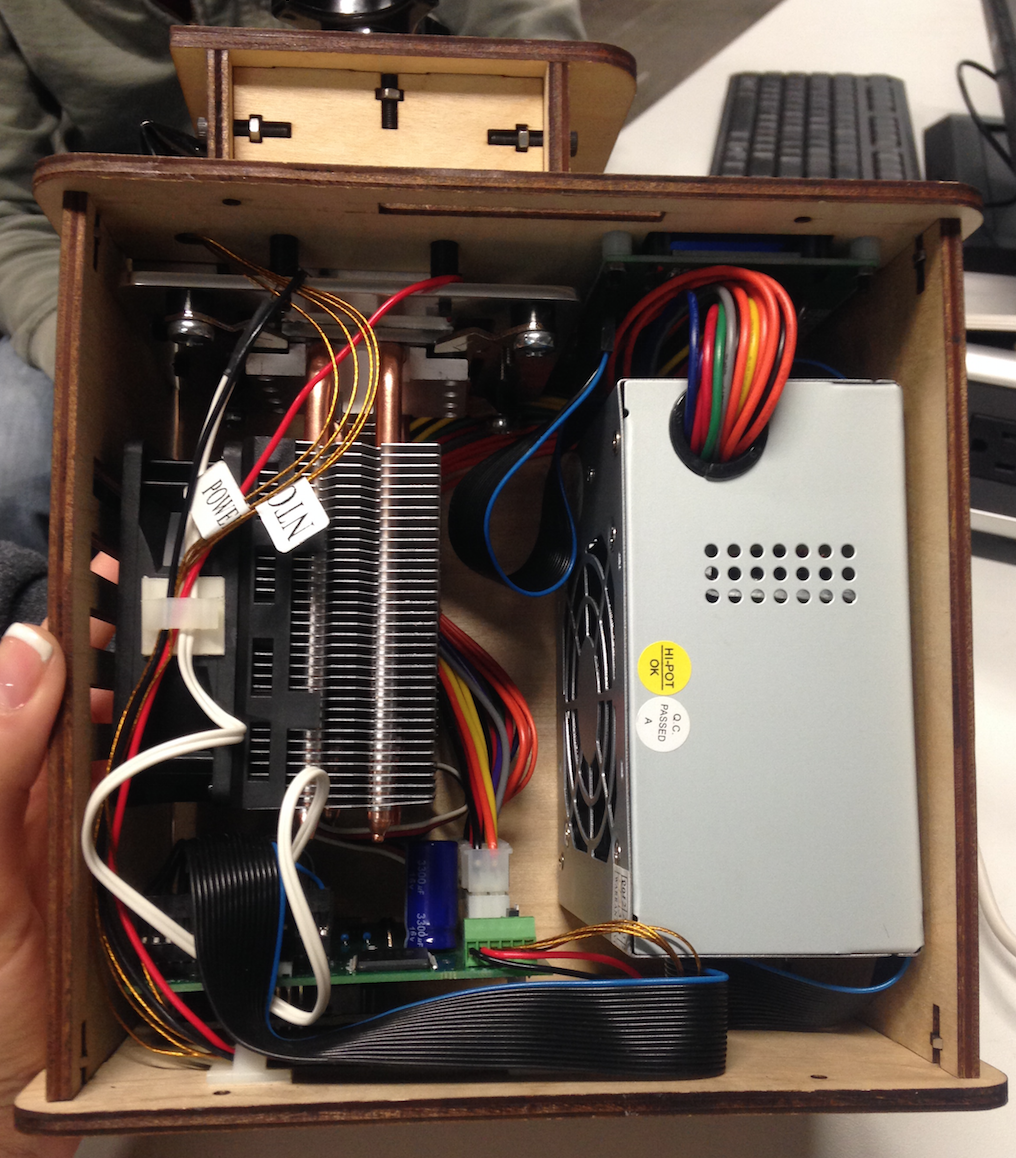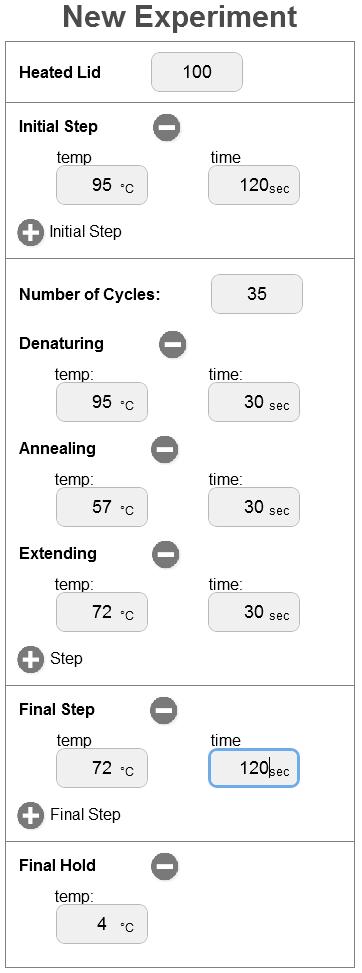BME100 s2014:T Group3 L4
| Home People Lab Write-Up 1 | Lab Write-Up 2 | Lab Write-Up 3 Lab Write-Up 4 | Lab Write-Up 5 | Lab Write-Up 6 Course Logistics For Instructors Photos Wiki Editing Help | |||||||||||||||
|
Kazhan Kader, Jaquelyn Corr, Sayer Aldaady, Hannah Spehar, Maria Morrow
LAB 1 WRITE-UPInitial Machine TestingThe Original Design The OpenPCR is a DIY machine that separates DNA strands through heat. Once the strands are separated, one can read a DNA sequence and look for mutations or abnormalities. The machine sends a current through the DNA to send the sequence to the CPU. The CPU then translates it onto the display where it shows a copy of the DNA. It can be used to diagnose diseases. The OpenPCR copies the DNA from genotypic language to computer language then to high level language. Experimenting With the Connections When we unplugged (part 3) from (part 6), the display did not turn on. When we unplugged the white wire that connects (part 6) to (part 2), the heater and fan did not function.
The date the OpenPCR was first tested was on March 20, 2014. The lid was first heated to 100°C. Then it was cooled to 95°C for 2 minutes and ran for 35 cycles. The DNA denatured at 95°C for 30 seconds. The annealing process cooled the DNA to 57°C for 30 seconds. It was then extended at 72°C for 30 seconds. Finally, the DNA was held at 72°C for 2 minutes, and it's final hold temperature was 4°C. The run was then started and finished successfully.
ProtocolsDNA Sample Set-up
Patient 1 Identification number: 54174 DNA Sample Set-up Procedure
Research and DevelopmentPCR - The Underlying Technology The component of template DNA is the DNA that is going to be amplified in the PCR reaction. Primers are stands that are complementary to the 3' template DNA strand used to be replicated. Taq polymerase is a DNA polymerase helps in DNA replication to synthesize DNA. The dNTP's are the building blocks from which the DNA polymerase synthesizes new DNA. The initial step of 95 C for 3 minutes activates the DNA polymerase. The denature step at 95C for 30 seconds causes the DNA to melt breaking the hydrogen bonds that hold the two strands together. The anneal step at 57C for 30 seconds allows primers to anneal to strands of DNA, starting the process of forming the DNA. The extend step at 72C for 30 seconds allows complementary strand of DNA to be synthesized using the dNTP's, exponentially synthesizing the DNA. Final step 72C for 3 minutes ensures that the strands of DNA keeps extending. The final hold 4C is for the storage of the DNA so no changes occur.
| |||||||||||||||







